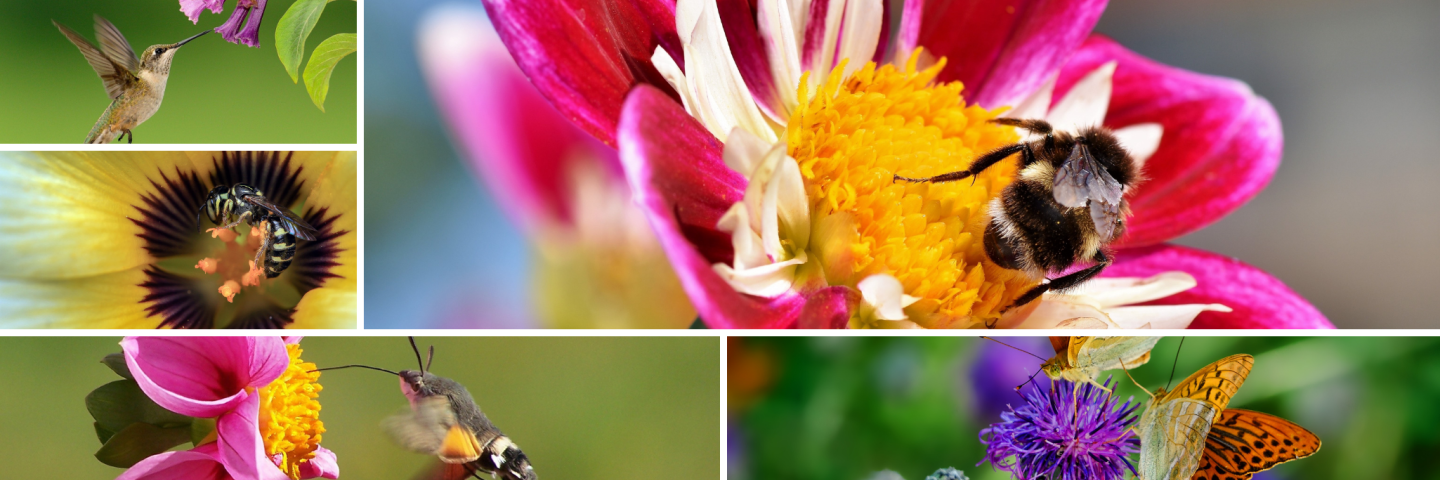
Pollinators are a keystone species group in our natural ecosystems and working lands. Improving existing and providing new habitat for pollinators has become a major focus for NRCS in working with our many partners and private land owners.
More than 85% of flowering plants require an animal, mostly insects, to move pollen. This makes pollinators a keystone species, essential for supporting New Jersey’s flora, fauna, natural heritage, and overall biodiversity. Pollinator habitat has multiple benefits to the conservation of natural resources. Along with wildlife value, the native plants used to create pollinator habitat can:
- help stabilize the soil
- improve water quality
- sequester carbon
- improve landscape aesthetics
- and in some instances can be a source of value-added products for the farm
NRCS NJ encourages farmers and landowners to consider pollinator resource concerns when planning farming operations and land management. Many of the fruits and vegetables produced in the Garden State require pollination by insects to produce fruits or seeds, and to maximize production of marketable fruits.
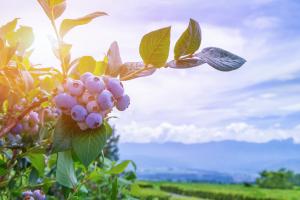
For instance, NJ is one of the top 10 producers of pollinator-dependent crops such as blueberries, cranberries, peaches, apples, tomatoes, bell peppers, eggplant, cucumbers, and squash in the U.S. and the recent Census of Agriculture shows NJ’s overall production of fruits and vegetables is valued at almost $340 million annually. Since most of these crops rely on pollinating insects for sufficient pollination and profitable harvests, conserving pollinators and their habitat is of significant importance to the state’s agricultural economy. Beyond crops grown for edible fruits, the seeds of many forage crops used by NJ livestock producers, such as clover and alfalfa, require insect pollinators.
Importance of Pollinator Diversity
There are about 3,600 native bee species in the U.S. and approximately 450 species in the mid-Atlantic. For a long time, honey bees were the most familiar pollinator and the role of native bees was largely overlooked. This has changed in recent years, as a prolific body of research shows pollinator diversity is critical for sufficient crop pollination. This research brought greater awareness to the importance of native bees. Surveys of farms in New Jersey and Pennsylvania have shown that native bees are responsible for a significant amount of pollination. In 41 different crop systems worldwide, honeybees only increased yield in 14% of the crops studies, and for many crops, wild pollinators enhanced fruit set regardless of the number of honey bees present . This shows managed honey bees are not a viable replacement for diverse pollinator communities.
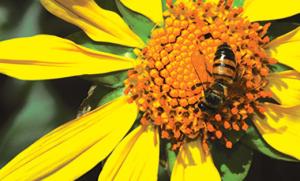
Pollinators have different behaviors and strategies when it comes to visiting flowers and collecting resources. For example, buzz-pollination (or sonication) is required flowers where pollen in not readily accessible, but rather pollen grains are hidden deep within poricidal anthers (~6% of flowering plants; >22,000 species). Bumble bees, carpenter bees, and several sweat bees, are able to buzz pollinate. This is a behavior where bees grasp the flower’s anthers with their mandibles (mouthparts) and rapidly contract their flight muscles to produce string vibrations, which forcibly expels pollen from tiny pores in the anthers. Crops such as cranberries, blueberries, tomatoes, eggplant, and peppers are buzz pollinated. Honey bees (and some native species) are incapable of movements that generate the vibrations required to release the pollen from poricidal anthers and therefore are unable to buzz-pollinate.
Taking an integrated approach to crop pollination, in which farms implement practices to support a diverse community of pollinators, has shown substantial benefits to crop production. By increasing the number and diversity of native bees, farmers may be able to counter rising costs of rented bee colonies while supporting sustainable native plant and pollinator communities. There are multiple benefits associated with creating pollinator habitat, one of which is attracting beneficial insects that prey upon or parasitize crop pests for enhanced biological control of pests (see Beneficial Insects below).
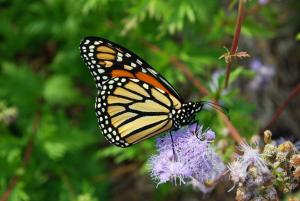
Butterflies
When planning pollinator habitat with additional considerations for butterflies, habitat must also include caterpillar host plants as well as nectar plants for adult butterflies. For example, milkweed is a host plant for monarchs.
Beneficial Insects
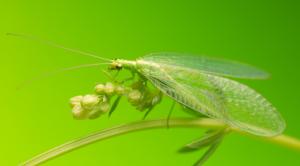
Habitat created for pollinators has many features that also support a noticeable diversity of other beneficial insects, such as predatory invertebrates (e.g., lady beetles, ground beetles, lacewings, wasps, spiders) and parasitoid insects (e.g., parasitic wasps and flies) that attack crop pests. These insects are often referred to as natural enemies of insect pests of crops or biological control (biocontrol) agents. Some of these insects are harvested from the wild or reared in artificial conditions and sold commercially. Release of commercially reared insects can have unintended, negative impacts. Examples include introducing insects from other states/regions that may compete with or displace resident (locally native) beneficial insects, contribute to the spread and prevalence of disease, and often times the insects do not provide the intended biological control because they fly away rather than remaining on the farm in the location they were released.
Instead of relying on introducing beneficial insects each year, there are simple steps farmers can take to create a favorable environment for beneficial insects on the farm to build up resident populations of predators and parasitoids. Pollinator habitat provides many of the features beneficial insects require: supplemental food (e.g., nectar, pollen, and alternative prey), refuge and cover, and protection from pesticides. The goal of attracting beneficial insects is to include biological pest control as part of an IPM plant to reduce the reliance on chemical pest control, manage insect resistance, mitigate or prevent environmental risks (e.g., water quality, pollution, habitat contamination), and create a more sustainable system.
Four Essential Components Needed for Pollinator Habitats
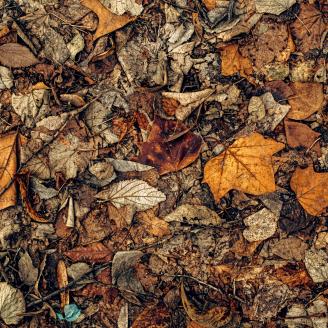
Overwinter Cover and Protection
Overwinter Cover and Protection
Leaving areas of undisturbed vegetative cover, standing stems, leaf litter, plant residue, woody structure (snags, logs, stumps) provides winter cover and protection for bees that spend their winter in nests, butterflies that overwinter attached to stems or inside rolled up leaves, and a variety of other places (e.g., tucked under loose bark, in the ground under leaf layers).
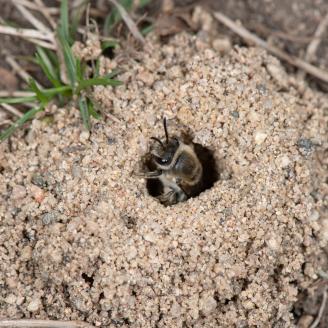
Nesting Sites
Nesting Sites
Native bees vary in their nesting habitat and behaviors. All bees require nesting habitat free from disturbance and protected from pesticide exposure.
Bumble bees nest in insulated cavities above or below ground (e.g., abandoned rodent burrows, hollow trees, in tussocks of bunch grasses, forest edges, in brush and rock piles).
Solitary ground-nesting bees are the largest group of native bees (accounting for 70% of native species). They require undisturbed ground for nesting and nests are commonly found in untilled areas, under/near hedgerows, on south facing slopes, and field and forest edges.
Solitary stem-nesting/wood-nesting bees account for 30% of native bees. They require plants with hollow stems or soft-pith stems for nesting (e.g., elderberry, blackberry, sumac, native (wild) rose, sunflower, goldenrod, joe-pye weed, and many others).
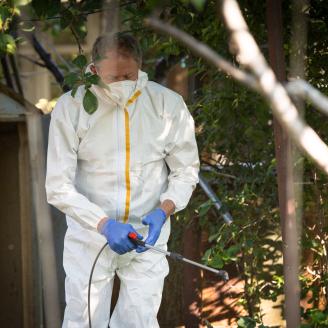
Protection from Pesticides and Other Land Management Activities
Protection from Pesticides and Other Land Management Activities
Pollinators and their habitat require protection from insecticide and fungicide, both the direct application as well as drift from application areas. A large number of insecticide and fungicide formulations, including several products approved for use on land that is certified organic, are highly toxic to pollinators and cause death or impair pollinator’s ability to navigate, collect resources, reproduce, and reduce resilience or the ability to overcome other stressors (e.g., disease).
Tillage, mowing, and other land management activities can also harm pollinators. Tillage can be can destroy nesting habitat and cause direct harm to adult bees provisioning the nests as well as immature stages of bees that are developing in the nest. Mowing can cause direct harm to bees visiting flowers and butterflies developing on host plants (e.g., chopping up monarch eggs and caterpillars) and can limit food sources by removing or suppressing growth of flowering plants.
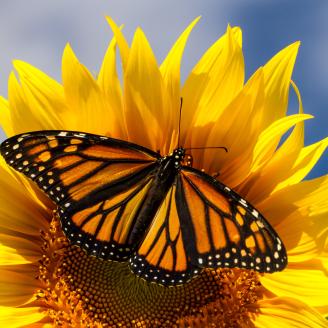
Consistent Source of High Quality Pollen and Nectar from a Variety of Plants
Consistent Source of High Quality Pollen and Nectar from a Variety of Plants
Native (wild) bees, managed honey bee colonies, butterflies, and other pollinating insects require ample sources of pollen and nectar from a variety of flowering plants. Habitat loss has resulted in landscapes devoid of floral resources. Planting native flowering plants (wildflowers, shrubs, and trees) to improve the accessibility, availability, quality, and quantity of food for pollinators and other flower-feeders is essential to their conservation.
Most bees are generalists and forage on a wide variety of plants. About 30% of the bees in the region are pollen specialists with a narrow diet. Specialist bees require pollen from specific plants to develop though immature stages and reach adulthood.
Combinations of native perennial plants that bloom from early spring, through summer, and into late fall.
Annual plantings, such as flowering cover crops (e.g., buckwheat, sunflower, clover, and phacelia) can boost nectar and pollen by providing a burst of forage, but the temporary nature of these plantings do not support pollinators throughout their lifecycle.
The Need for Conservation Action
As a group, pollinators are threatened worldwide by habitat loss, degradation, and fragmentation; loss of farmland or farmland diversity; exposure to toxic pesticides; disease and parasites; changing land use and development; spread of invasive plant species displacing native plant communities; and fluctuating climatic conditions. This has serious economic implications for native ecosystem diversity and stability, for agricultural producers and gardeners, and for all consumers of agricultural products.
There are many other invertebrate groups that are in decline and will benefit from improved habitat and landscape diversity, including many aquatic species, which are particularly at-risk due to warming water temperatures and impaired water quality.
Conservation Opportunities for Pollinators and Beneficial Insects
NRCS conservation practices such as:
- Wildlife Habitat Planting
- Conservation Cover
- Hedgerow Planting
- Tree/Shrub Establishment
- Riparian Buffers
- Field Border
- Early Successional Habitat Management and Development
- Cover Crop and
- Integrated Pest Management (IPM)
can provide protection, food, nest sites, and overwintering refuge for local native (wild) pollinators and managed honey bee colonies. Native plants are the best choices for conservation plantings because plants and their insect visitors have evolved together over thousands of years and perennial (permanent) habitats are of greater value and result in longer-lasting, meaningful conservation.
Payments are available to farmers and landowners through the Environmental Quality Incentives Program (EQIP) for implementation of pollinator conservation practices.

